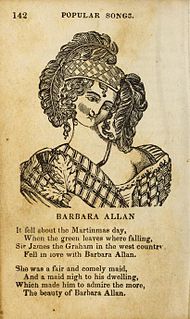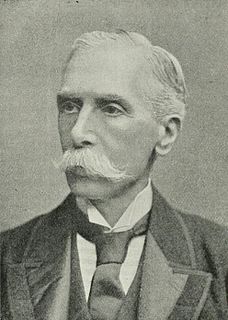
Sir Thomas Wyatt was a 16th-century English politician, ambassador, and lyric poet credited with introducing the sonnet to English literature. He was born at Allington Castle near Maidstone in Kent, though the family was originally from Yorkshire. His family adopted the Lancastrian side in the Wars of Roses. His mother was Anne Skinner, and his father Henry, who had earlier been imprisoned and tortured by Richard III, had been a Privy Councillor of Henry VII and remained a trusted adviser when Henry VIII ascended the throne in 1509. Thomas followed his father to court after his education at St John's College, Cambridge. Entering the King's service, he was entrusted with many important diplomatic missions. In public life his principal patron was Thomas Cromwell, after whose death he was recalled from abroad and imprisoned (1541). Though subsequently acquitted and released, shortly thereafter he died. His poems were circulated at court and may have been published anonymously in the anthology The Court of Venus during his lifetime, but were not published under his name until after his death; the first major book to feature and attribute his verse was Tottel's Miscellany (1557), printed 15 years after his death.

John Lawrence Ashbery was an American poet and art critic.

"Barbara Allen" is a traditional folk song that is popular throughout the English speaking world and beyond. It tells of how the eponymous character denies a dying man's love, then dies of grief soon after his untimely death.

Alfred Austin was an English poet who was appointed Poet Laureate in 1896, after an interval following the death of Tennyson, when the other candidates had either caused controversy or refused the honour. It was claimed that he was being rewarded for his support for the Conservative leader Lord Salisbury in the General Election of 1895. Austin's poems are little-remembered today, his most popular work being prose idylls celebrating nature. Wilfred Scawen Blunt wrote of him, “He is an acute and ready reasoner, and is well read in theology and science. It is strange his poetry should be such poor stuff, and stranger still that he should imagine it immortal.”

Dinah Maria Craik was an English novelist and poet. She is best remembered for her novel John Halifax, Gentleman, which presents the mid-Victorian ideals of English middle-class life.

"Sir Patrick Spens" is one of the most popular of the Child Ballads, and is of Scottish origin. It is a maritime ballad about a disaster at sea.

The Reliques of Ancient English Poetry is a collection of ballads and popular songs collected by Bishop Thomas Percy and published in 1765.

"The King and the Beggar-maid" is a 16th-century broadside ballad that tells the story of an African king, Cophetua, and his love for the beggar Penelophon. The story has been widely referenced and King Cophetua has become a byword for "a man who falls in love with a woman instantly and proposes marriage immediately".

Lord Thomas and Fair Annet, also known as Lord Thomas and Fair Eleanor, is an English folk ballad.
"The Fair Flower of Northumberland" is a folk ballad.
Nationality words link to articles with information on the nation's poetry or literature.

Veronica Gambara was an Italian poet and politician. She was the ruler of the County of Corregio from 1518 until 1550.
"We are Seven" is a poem written by William Wordsworth and published in his Lyrical Ballads. It describes a discussion between an adult poetic speaker and a "little cottage girl" about the number of brothers and sisters who dwell with her. The poem turns on the question of whether to account two dead siblings as part of the family.
"Lucy Gray" is a poem written by William Wordsworth in 1799 and published in his Lyrical Ballads. It describes the death of a young girl named Lucy Gray, who went out one evening into a storm.

The Feast of the Poets is a poem by Leigh Hunt that was originally published in 1811 in the Reflector. It was published in an expanded form in 1814, and revised and expanded throughout his life. The work describes Hunt's contemporary poets, and either praises or mocks them by allowing only the best to dine with Apollo. The work also provided commentary on William Wordsworth and Romantic poetry. Critics praised or attacked the work on the basis of their sympathies towards Hunt's political views.
Richard Arnold, was an English antiquary and chronicler.

Self-Portrait in a Convex Mirror is a 1975 poetry collection by the American writer John Ashbery. The title, shared with its final poem, comes from the painting of the same name by the Late Renaissance artist Parmigianino. The book won the Pulitzer Prize, the National Book Award, and the National Book Critics Circle Award, the only book to have received all three awards.

"The Skaters" is a 739-line long poem by American postmodern poet John Ashbery. Written from 1963 and in close to its final state in 1964, it was first published in Ashbery's fifth collection of poems, Rivers and Mountains published by Holt, Rinehart & Winston.
"Henry and Emma, a poem, upon the model of The Nut-brown Maid" is a 1709 poem by Matthew Prior. As the subtitle indicates, the poem is based on the fifteenth-century ballad "The Nut-Brown Maid".













